Desalination is a cover-up for inefficiency even corruption in India
By RN Bhaskar and Sakeena Bari Sayyed
Increasingly, India is pushing for more desalination projects. That is a mistake because a) India does not need desalination plants except for a very few stray cases. b) The demand for desalination plants is often just a cover up for inefficiency, even corruption.
 India does not need Desalination plants
India does not need Desalination plants
There have been a series of articles criticising governments for a rush to set up desalination plants(https://asiaconverge.com/2019/08/niti-aayog-is-wrong-about-desalination/). But this demand is ill advised. People forget that India is blessed with abundant water.
China has more need for desalination of water than India does. The chart showing water as a percentage of landmass speaks for itself. But India misuses water. It even abuses water. It does not even have meters for measuring the extraction of ground water reserves ditto for the innumerable wells that dot the countryside.
Even its rivers are abused – they are polluted. Grandiose schemes like Namami Gange have wasted money because there is no political will to penalize the promoters of establishments that pour their effluents into rivers (https://asiaconverge.com/2021/08/the-fanciful-figures-of-uttar-pradesh/). In Maharashtra, the sad plight of the Mithi river is all too familiar (https://frontline.thehindu.com/environment/mumbai-mithi-river-cleanup-corruption-bmc-politics/article69682127.ece).
Even the lakes are not desilted regularly. As a result, even this reservoirs get polluted and collect less water each succeeding year because the bottom is layered with silt (https://indianexpress.com/article/cities/mumbai/bmc-desilting-work-key-lakes-decade-rti-reply-9489743/). The unwillingness of the government to penalize promoters for effluent discharge, or haul up government officials who have let this happen, has led to terrible governance. The government is reluctant to chargesheet officials who do not ensure the desilting of lakes. All this is testimony to the disregard for governance.
India’s ancestors always talked of preserving water and not wasting it. Even if India cannot learn from its ancestors, it has only to look at how Japan does this. Japan’s power plants routinely build large water reservoirs under the plants. These tanks are connected to roads and drain-pipes which then channel much of the rainwater into these storage reservoirs. That water is then treated, purified and made available to agriculture, industry and people.
Look at how even the British did this. A recent discovery under the sprawling GPO building in Mumbai showed the existence of a large (presumed) water collection reservoir which could be used when normal water supply failed (https://www.hindustantimes.com/mumbai-news/mumbaiwale-what-secrets-lie-beneath-the-surface-of-your-city/story-qGCFAcV92budUffQkgUpMP.html). Mumbai and India evidently have no respect for such knowledge or practices.
There are at least seven major desalination plants in India. Earlier, desalination was an expensive proposition. You needed (coal-based) power to evaporate sea water and then condense it as pure water. That was expensive. But with solar power, the costs have shrunk.
According to Thunder Said Energy (https://thundersaidenergy.com/downloads/desalination-by-reverse-osmosis-the-economics/), the average cost of desalinated water globally is $1.00 per cubic meter, which equals $0.001 per litre. This is a significant improvement from the 2021 Israeli benchmark of $0.05 per litre (https://asiaconverge.com/2021/09/israel-nd-water-management/), reflecting both technological efficiencies and cheaper renewable energy inputs.
It remains to be seen whether Indian solar plants match this lower pricing or not. Most plants in India have not disclosed their cost of generating desalinated water.
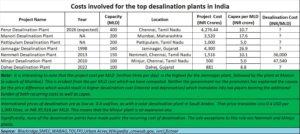 There is a little more transparency when it comes to plants located overseas. Almost all of them give both their respective project costs as well as the cost of converting salt water into desalinated water. That degree of transparency is not yet evident with Indian projects.
There is a little more transparency when it comes to plants located overseas. Almost all of them give both their respective project costs as well as the cost of converting salt water into desalinated water. That degree of transparency is not yet evident with Indian projects.
 Indian Costs appear controlled
Indian Costs appear controlled
To understand how different plants have used project related expenses, it is first necessary to normalise both Indian and foreign plants by converting their stated costs into Rupees Crore perMLD (million litres daily).
 It is then that we realise that Indian project managers have actually managed to keep their project costs low- or rather at the same level as their foreign counterparts.
It is then that we realise that Indian project managers have actually managed to keep their project costs low- or rather at the same level as their foreign counterparts.
Of course, there is one risk India faces — every project that has been set up in the recent past has involved time and cost overruns. Thus, it is not unusual for promoters of such projects to restate their respective project costs. At the moment, we have assumed that these costs are the final costs. Any variation announced in the future will need to be looked at separately to find out if the escalation in project costs is out of sync with international costs.
Conclusion
India’s penchant for setting up expensive projects is well known. Its reluctance to admit its failure in managing water – both supply and distribution – is also legendary. Unless such practices are discouraged, India will continue to squander good money to cover up policy failures on many other fronts.
We reiterate that India does not need as many desalination plants as is being projected.
If India focuses on better water management, it could have a more vibrant rural economy.
===============
Do view my latest podcast on the causes behind riots as in Nepal and Bangladesh, and the lessons for India. You can view it at https://youtu.be/AuiUlqS7UmA . Another podcast which should be up within a day, will be added here later.
===============
And do watch our daily “News Behind the News” podcasts, streamed ‘live’ every morning, Monday through Friday, at 8:15 am IST. The latest can be found at https://www.youtube.com/live/TuhBEnzX4lY?si=HyVYNiPwDPjCP6lU . This is the last edition of a daily News Behind the News podcast. From next week, we have a weekly capsule of News Behind the News every Saturday morning at 8:15 am. Do join us there.
===================












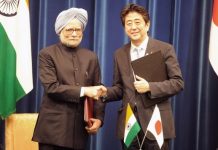








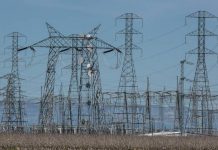




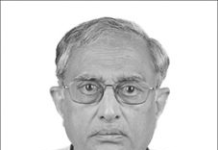


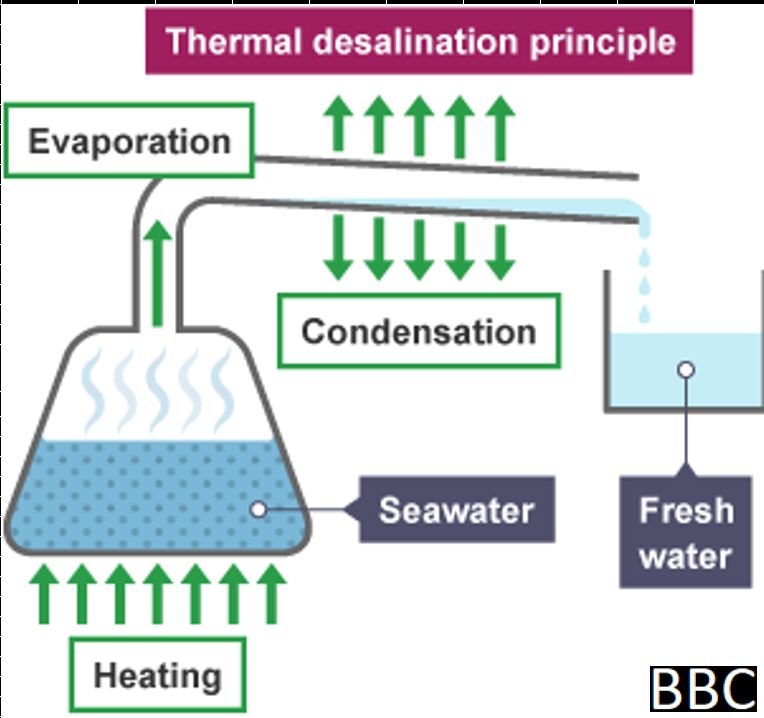
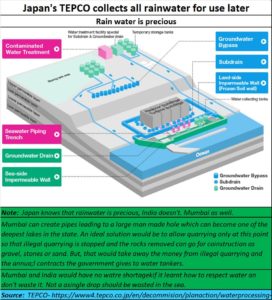
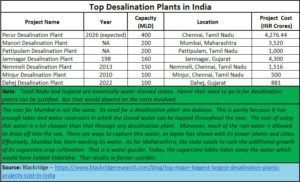






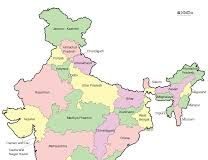
COMMENTS